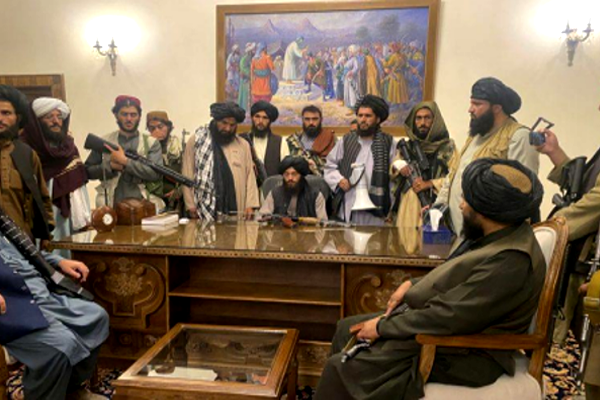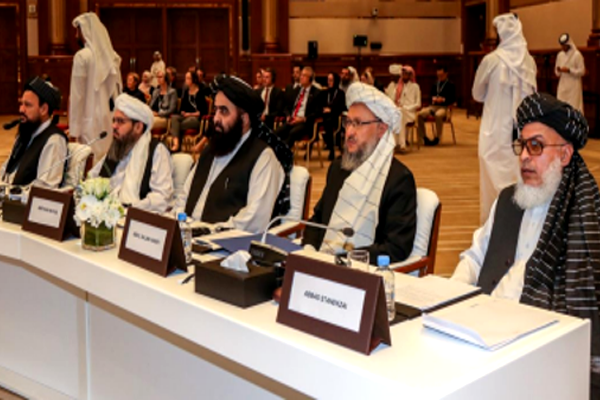Talibanisation of Afghanistan

August 19, 2021 Maj Gen Dr Rajan Kochhar, VSM (Retd.)
The cat is finally out of the bag. The much spoken about Afghan National Defense Forces (ANDF) have capitulated to a ragtag outfit of the Taliban fire fighters in less than 15 days. The only parallel of this kind of blitzkrieg in military history was the Indo-Pak 1971 conflict and the annexation of East Pakistan. The entire World is intrigued by the manner of the collapse of a 3.5 lac Afghan Army with about 60,000 of its special forces to just about 60000-70000 Taliban fighters. This would be much debated in times to come amongst defence and political analysts. The big question which emerges now is ''What Next''.

In hindsight it seems the US decision to withdraw from Afghanistan seems to have been ill conceived and would definitely impact its image in the World. Was it not known to them that the Afghan Army was ill-trained to fight a conventional war, were low on morale as many of them were not even paid wages since Feb 2021, that there were shortages in terms of ammunition, fuel, rations etc. and so on? Further, the US policy to preclude the Afghan Govt in any peace talks has caused speculation on their role in the abject surrender of the Afghan forces. Does it seem to be a well thought of strategy to avoid civilian casualties or provide a smooth transition to power for the Taliban leadership to take over the reins of the country from an elected democratic Government? It seems this is becoming a norm in the present geo-politics of the region after a similar situation was recently seen in Myanmar.

The senior leadership of Taliban have already reached Kabul and is consolidating the gains made. Statements now emanating assure the people of Afghanistan, a stable government, good governance, no victimization, respect for women and adherence to sharia laws. It has been stated that women will find a place in the Government. These signals are ominous and largely addressed to change the perceptible image of Taliban to the World. The US has also stated it would recognize the Taliban Government subject to the adherence to global norms of protection of human rights and no encouragement of any kind of terrorists re-grouping on Afghan soil. The US Secretary of State, Anthony Blinken has stated ‘A future Afghan government that upholds basic rights of its people and that doesn’t harbour terrorists is a government we can work with and recognise.’ He added, ‘It’s incumbent on the international community, including the United States, to do everything we can using every tool that we have — economic, diplomatic, political — to ensure (those) rights are sustained.’ Therefore, the recognition of a Taliban led Government by major nations of the World is very much in the offing. Amongst the early birds to recognise the Taliban Government would be China, Russia, Pakistan with Iran to follow.
Therefore, the policy being dictated now is “Wait and Watch”. It would be interesting to see how Taliban would prevent other terrorist groups from operating on its soil, especially after having taken their help while fighting the Afghan and NATO forces. This aspect would be of immense relevance to India, as there is a great deal of apprehension that Taliban would now encourage the other terrorist groups like Lashkar-e Tauba and Jaish-e-Mohammad to push cadres into Kashmir to cause unrest.
Another interesting scenario would be the impact of these developments on Pakistan especially having a proxy Government in place in Afghanistan. It is a common knowledge that Tehreek-e-Taliban (TTP) had fought alongside Taliban and would get the necessary support now making them even stronger to negotiate with Pakistan. Do we therefore see a “Talibanized Pakistan” in the offing? Or Pakistan would take this opportunity to seek the much-touted strategic depth it always desired.
The country which probably would gain most from these changed circumstances would be China. Probably a God sent an opportunity given to them by their adversary, the United States. They would now be in a position to come forward and offer all the economic aid required to sustain the Afghan Government as well as take on infrastructure development in the region. It is therefore no surprise that China has already recognized the new regime and has stated its full support to them.
Having addressed all these concerns, it would be prudent to analyze what the future course of actions would be available to India and how events would shape up in the near future. The present signals emanating from Afghanistan suggest that Taliban 2.0 is trying to shed its erstwhile image. Therefore, it may welcome any proposal to further development of infrastructure and well being in the region. To that extent one may expect the ongoing Indian projects to be continued further till finality. There are presently 400 such projects running concurrently under Indian supervision and funding. It would therefore be worthwhile to wait and see whether Taliban would invite India for further assistance and developmental support. Much would depend upon whether India recognizes the newly placed Taliban Government.
Today, the present-day Taliban is keen to be seen as a liberal and forward-thinking outfit with a focus on development and a humanitarian approach in the conduct of its affairs. The very fact that they involved themselves in the peace process suggested this perceptible change. This Taliban seemingly is a much stronger version of its earlier “Avatar”, as it has today a vast arsenal of weapons, air-power and the much-needed financial flow in terms of money from its drug trade, taxes, extortion and other means.
Presumably, this is the very reason that it would seek legitimacy in the eyes of the World. India has the Hobson’s Choice of following its stance what it did when Taliban 1.0 came to power in the 1990s or follow the dictates of the present geo-political situation and extend a helping hand to the Taliban Government and give it the due recognition to further its diplomatic agenda. As it is often said that “there are no permanent enemies or friends but common interests which dictate foreign policy”.
About the Author:
Maj Gen Dr Rajan Kochhar, VSM (Retd) is a former MGAOC Central Command. He has served in various important assignments in the Indian Army in Jammu and Kashmir and the North-East. An alumnus of Defence Services Staff College and College of Defence Management. He is presently a Senior Adviser with Defence Research and Studies and Member MP IDSA, CENJOWS and SamDES. He covers defence issues on various national TV channels. His recent book on “Breaking the Chinese Myth” has been a best seller on Amazon.
Note:
The article reflects the opinion of the author and not necessarily the views of the Organisation.
Share this article:
© Copyright 2025 Indic Researchers Forum | Designed & Developed By Bigpage.in